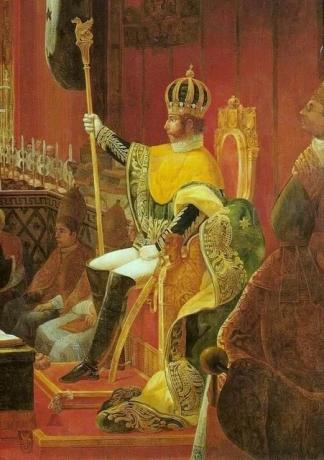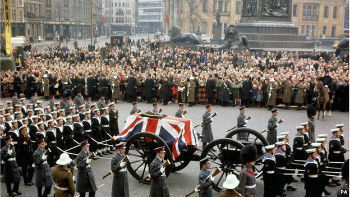cripple (1730-1814) was a sculptor, woodcarver, carpenter and architect from colonial Brazil.
He is considered the greatest representative of Minas Gerais baroque, being known for his soapstone sculptures, wood carvings, altars and churches.
Biography
Antônio Francisco Lisboa, O Aleijadinho, was born in the Minas Gerais city of Vila Rica, now Ouro Preto. There is controversy about his birth date, but most researchers say he was born on August 29, 1730.
Son of the Portuguese Manuel Francisco Lisboa, master of carpentry, who arrived in Minas Gerais in 1728, and of a slave named Isabel.
Aleijadinho studied the first letters, Latin and music with some priests from Vila Rica. He learned to sculpt as a child, observing the work of his father who carved a large number of religious images in wood.

In the second half of the 18th century, thanks to gold, rich stone and masonry constructions emerged.
It was at this time, when Minas Gerais was leading the colony's artistic movement, that Aleijadinho developed his activity as an architect and sculptor.
It was difficult to get recognition for his talent, because at the time, the condition of mestizo was not forgiven. Many of his works were done for brotherhoods and brotherhoods of whites.
Because of his condition, he was not allowed to sign either his work or the payment registers.
When his fame, despite everything, reached other cities and his work was in full splendour, disease attacked him. Leprosy or syphilis, it is not known for sure, deformed his feet and hands.
However, even sick, he did not abandon his art. So when his hands were completely deformed, he tied them with a leather thong to hold the chisel, hammer, and ruler.
Aleijadinho died on November 18, 1814 in his hometown. His body was buried in the parish church of Antônio Dias, next to the altar of the Confraternity of Nossa Senhora da Boa Morte.
Works and features
Most of Aleijadinho's works have religiosity as a central theme. The sacred images he produced are characterized by colors, lightness, simplicity and dynamism.
Much of his work can be found in the mining towns of Ouro Preto (formerly Vila Rica), Tiradentes, São João del Rei, Mariana, Sabará and Congonhas do Campo.
Bom Jesus de Matosinhos Sanctuary
Some sculptural works he produced are in the Bom Jesus de Matosinhos Sanctuary, in Congonha do Campo. The site's plan mimics the sanctuary of Bom Jesus de Braga, in Portugal.
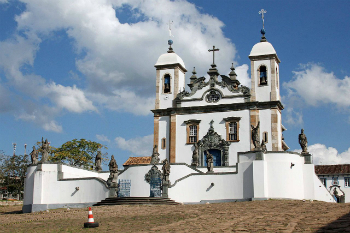
In this Sanctuary, the representations of the "Via Sacra" deserve to be highlighted. The scenes of the Passion of Christ are formed by 66 figures, all of cedar, in natural size. These works can be found in the seven chapels on the ramp of the Bom Jesus de Matosinhos Sanctuary:
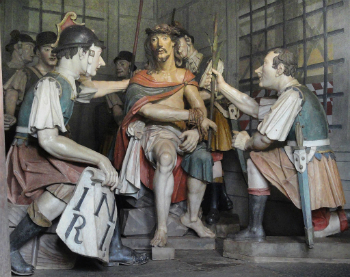
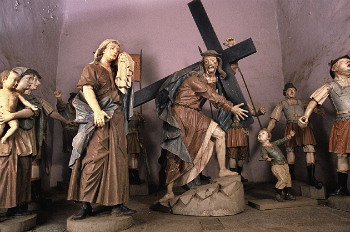

the prophets
In addition to these works, in the Bom Jesus de Matosinhos Sanctuary we find some emblematic sculptures by Aleijadinho, which are located in the Sanctuary forecourt.
The set known as the "Twelve Prophets" was produced between the years 1794 to 1804. Aleijadinho represented Amos, Abdias, Jonah, Baruch, Isaiah, Daniel, Jeremiah, Hosea, Ezekiel, Joel, Habakkuk and Nahum.
Thus, the forecourt of the Sanctuary, in the form of a terrace, is decorated with 12 statues of the prophets a little larger than life size. The shapes imitate the costumes of the time of the prophets, according to biblical engravings.
The statues of the prophets were made of soapstone, which is abundant in the gold region. This material was widely used by Aleijadinho also in thresholds and medallions for frontispieces.

Church of St. Francis of Assisi
The Church of São Francisco de Assis, in Ouro Preto, is considered a masterpiece of Brazilian baroque. Its construction began in 1776 and completed in 1794. In addition to baroque elements, the influence of the style is notorious rococo.

Aleijadinho traced the plan, elaborated the carving and the sculpture of the frontispiece. He made two pulpits, in which he carved figures of saints.
He also produced the baptismal font, the images of three persons of the Holy Trinity and the two angels that adorn the main altar. The facade is adorned with a medallion where the image of St. Francis of Assisi is inserted.
Read too:
- Baroque art
- Baroque style
- Baroque Sculpture
- Architecture baroque
- Baroque Characteristics
- Exercises on Baroque
- What is Sacred Art?

